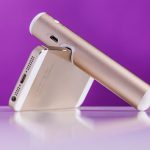Many problems may arise while using USB devices connected to a Windows based PC. Some of the troubles may occur due to software while the rest of the troubles crop up due to hardware settings and connections. The troubleshooting steps to work out hardware connection issues are described below.
Before you start using the faulty USB device execute the following steps.
1) Unplug the other USB devices
The other USB devices connected to the PC might cause problems for the USB device under testing.

2) Connect AC adapters
It is advisable not to draw power from the USB ports. It is better to use AC adapter as a power source. If the USB device has its own AC adapter, use it.
3) Verify whether the problem happened due to BIOS or chipset drivers
Restart your PC into a different OS. After booting plug in the USB device to see whether the USB device problem occurred due to Windows installation.
4) Rule out the problems with the USB device itself
Plug in the USB device into a different PC. This step is done to confirm whether the problem is due USB device itself or due to PC hardware and configuration.
5) Use different USB cables
The USB wire might be faulty. So try different USB cable. Since the length of the cable might be the cause, use the shortest USB cable. The reason is that the electrical signal on the long USB cable might take more time to reach all the nodes connected to the USB network.
6) Use other USB ports on the PC
It might happen that the particular USB port under use is defective. So try other USB ports on the PC. Try to plug in the USB device directly into the other USB ports. Try to avoid the use of hubs, port replicators, docking stations, etc.
7) Inhibit the USB controllers from entering sleep mode or suspended state
The USB devices might not be detected because of this Windows bug.
8 ) Disable USB Power Management
Disable the USB power management option to avoid power management related problems.







